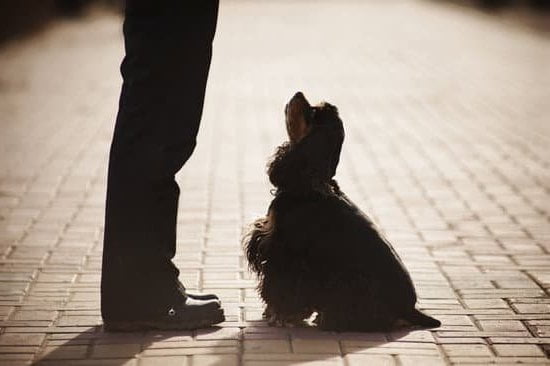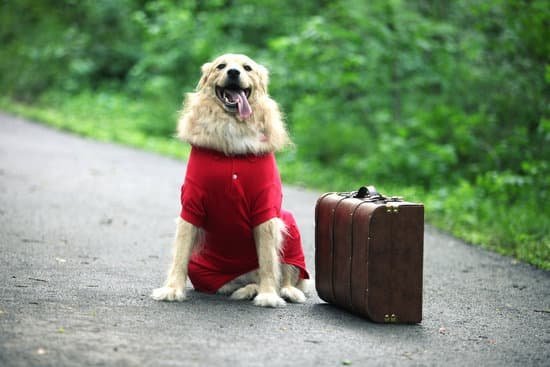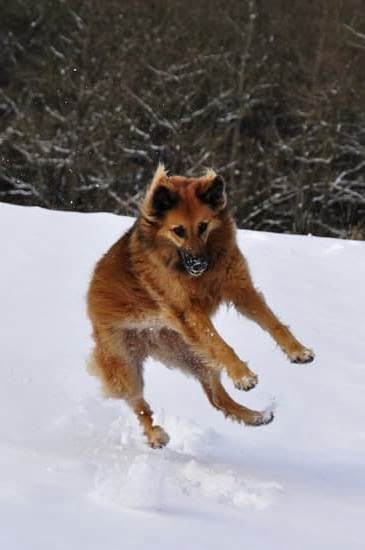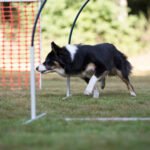Are you wondering how to potty train your rescue dog? Potty training can be a challenging process, especially for dogs with unknown backgrounds and experiences. Establishing a routine and understanding your dog’s unique needs are essential for successful potty training. In this article, we will explore the importance of potty training for rescue dogs and provide valuable tips and insights to help you effectively train your new furry friend.
Rescue dogs may face unique challenges when it comes to potty training. Many of these dogs have had uncertain or traumatic pasts, which can impact their ability to learn and adjust to new routines. Understanding your rescue dog’s background is crucial in addressing any issues they may have with potty training. By delving into their history, you can better understand their behavior and tailor the training process to suit their specific needs.
Setting up a consistent potty training schedule is key to success. This involves creating a routine that aligns with your dog’s natural habits and being patient and persistent throughout the process. Additionally, choosing the right potty training method based on your dog’s individual needs can significantly impact their success. Throughout this article, we will provide valuable tips and guidance on setting up a successful potty training schedule and choosing the best method for your rescue dog.
Understanding Your Rescue Dog’s Background
When potty training a rescue dog, it’s important to consider the potential reasons why they may struggle with this process. Many rescue dogs have had difficult or traumatic experiences in their past, which can impact their ability to adapt to new routines. Some may have been strays and never learned proper potty habits, while others may have been kept in confined spaces for extended periods, leading to unavoidable accidents.
A rescue dog’s background can also affect their emotional and psychological well-being, making it challenging for them to trust new owners and adapt to unfamiliar environments. It’s essential for dog owners to understand that these challenges are not indicative of a lack of intelligence or willingness to learn on the part of the rescue dog. Rather, it requires patience, understanding, and a gentle approach to help them acclimate to their new home and establish good potty habits.
Taking the time to learn about your rescue dog’s past experiences will provide valuable insight into how best to approach their potty training. Understanding any potential triggers or anxieties that may be linked to their previous environment can help you tailor your training methods in a way that is sensitive and effective for your individual rescue dog.
| Rescue Dog Potty Training | Understanding Your Dog’s Background |
|---|---|
| Some rescue dogs might have traumatic experiences affecting potty training | Past difficulties can impact emotional and psychological well-being |
| Dog owners need patience, understanding, and a gentle approach when helping their rescue dogs adapt | Tailoring training methods based on individual history is crucial |
Setting Up a Potty Training Schedule
Tips for Creating a Consistent Potty Schedule
One of the most crucial aspects of potty training your rescue dog is establishing a consistent schedule. By setting specific times for your dog to go outside, you can help them develop a routine and understand when it’s time to relieve themselves. Start by taking your rescue dog outside first thing in the morning, after meals, before bedtime, and at regular intervals throughout the day. Consistency is key, so try to stick to the same schedule every day.
The Importance of Patience and Consistency
Potty training a rescue dog can be challenging, and it requires a great deal of patience and consistency. It’s important to remain calm and avoid getting frustrated if accidents occur. Understand that your rescue dog may need some time to adjust to their new environment and learn the rules of their new home. Consistently following the potty schedule and providing positive reinforcement will help them understand what is expected of them.
Monitoring Your Rescue Dog’s Behavior
Keeping an eye on your rescue dog’s behavior is crucial during the potty training process. Watch for signs that they need to go outside, such as sniffing around or circling in a specific area. When you notice these behaviors, take them outside immediately to their designated potty area. Additionally, monitoring your dog inside the house can help prevent accidents and reinforce proper potty training habits.
Choosing the Right Potty Training Method
When it comes to potty training your rescue dog, choosing the right method is crucial for success. Different dogs may respond better to different training approaches, so it’s important to consider your dog’s individual needs and behavior when selecting a potty training method.
Different Potty Training Methods
There are several potty training methods that you can consider when working with your rescue dog. Crate training involves using a crate or enclosed space to encourage your dog to hold their bladder and only eliminate outside. Paper training involves teaching your dog to eliminate on a specific type of paper or pad indoors. Outdoor potty training focuses on teaching your dog to only eliminate outside in a designated area.
Assessing Your Dog’s Needs
Before choosing a potty training method, take some time to assess your rescue dog’s needs and behaviors. Consider factors such as the size of your living space, your work schedule, and any physical limitations that might affect your ability to take your dog outside regularly. Additionally, observe how your dog responds to certain commands and rewards to determine which method might be most effective for them.
Tips for Choosing the Right Method
When selecting a potty training method, it’s essential to choose one that aligns with both your lifestyle and your rescue dog’s needs. For example, if you live in an apartment with limited outdoor access, outdoor potty training might not be feasible.
However, if you have a flexible schedule and plenty of outdoor space, this method could be highly effective for your rescue dog. Ultimately, the key is to choose a method that you can consistently implement and that suits your dog’s personality and behavior.
Tips for Successful Potty Training
When it comes to successful potty training for rescue dogs, there are several tips and techniques that can make the process smoother and more effective. By implementing these strategies, you can help your rescue dog adjust to their new environment and establish positive bathroom habits.
Here are some tips for successful potty training:
- Use positive reinforcement: When your rescue dog successfully goes to the bathroom in the appropriate spot, be sure to praise them and offer a treat as a reward. Positive reinforcement can help reinforce good behavior and encourage your dog to continue using the designated potty area.
- Establish a routine: Consistency is key when it comes to potty training. Set specific times for potty breaks throughout the day, such as after meals, first thing in the morning, and before bedtime. By establishing a routine, you can help your rescue dog understand when it’s time to go outside.
- Supervise and monitor: Keep a close eye on your rescue dog, especially during the early stages of potty training. Supervision is essential for preventing accidents indoors and redirecting your dog to the correct outdoor area for bathroom breaks.
By incorporating these tips into your potty training regimen, you can set your rescue dog up for success and create a positive experience that strengthens the bond between you and your pet. Remember that patience, consistency, and positivity are key elements in achieving successful potty training with any dog, especially those who may have had challenging experiences before being rescued.
Addressing Accidents and Setbacks
Dealing with accidents and setbacks is an inevitable part of the potty training process, especially when it comes to rescue dogs. It’s important to remember that these dogs may have had past experiences that make potty training more challenging for them. Here are some tips for handling accidents and setbacks during the potty training process:
- Stay calm and patient: When accidents happen, it’s crucial to remain calm and avoid getting frustrated with your rescue dog. Yelling or scolding your dog can create anxiety and fear, making the potty training process even more difficult.
- Clean up thoroughly: It’s essential to clean up accidents promptly and thoroughly to eliminate any lingering odors. Using an enzymatic cleaner can help break down the urine scent and discourage your dog from repeating the accident in the same spot.
- Reassess your approach: If you notice a pattern of accidents or lack of progress in potty training, it may be time to reassess your training method. Consider consulting a professional trainer or behaviorist for guidance on alternative approaches that may better suit your rescue dog’s needs.
Handling accidents and setbacks with patience, understanding, and a proactive approach will ultimately contribute to a successful potty training experience for both you and your rescue dog. Remember that every dog is different, so it’s essential to tailor your training approach to meet your individual dog’s needs.
Importance of Consistency and Persistence
Potty training a rescue dog requires a great deal of consistency and persistence. Due to their past experiences, rescue dogs may have unique challenges when it comes to potty training. It is important for dog owners to understand that these challenges can be overcome with the right approach and dedication. Consistency is key in establishing a routine that helps the rescue dog understand where they should be eliminating, whether it’s outside or on a designated spot indoors.
In addition to being consistent, dog owners must also remain persistent throughout the potty training process. It is common for rescue dogs to experience setbacks and accidents as they adjust to their new environment.
However, it’s crucial for owners to remain patient and continue providing encouragement and support to their furry friend. By maintaining a positive attitude and consistently working on the potty training process, dog owners can help their rescue dog successfully learn where and when they should go potty.
Creating a supportive environment that focuses on positive reinforcement during the potty training process is essential. Whether it’s through verbal praise, treats, or rewards, consistent positive reinforcement can help encourage the desired behaviors in rescue dogs. Ultimately, by remaining consistent and persistent in their efforts, dog owners can successfully potty train their rescue dog and celebrate the achievement of reaching this important milestone.
| Consistency | Persistence |
|---|---|
| Establishing a routine | Remaining patient through setbacks |
| Supporting positive reinforcement | Dedication to continuous training |
Celebrating Potty Training Success
In conclusion, potty training a rescue dog can be a challenging but ultimately rewarding experience. Understanding your rescue dog’s background and setting up a consistent potty training schedule are crucial first steps. Choosing the right potty training method and implementing practical tips for success, such as positive reinforcement and supervision, can also make a significant difference in the process.
It’s important to remember that accidents and setbacks are a normal part of potty training, especially for rescue dogs with potential trauma in their past. Patience and calmness when handling accidents will go a long way in successfully potty training your rescue dog. Consistency and persistence are key throughout the entire process, demonstrating to your rescue dog that you are committed to helping them succeed.
Ultimately, celebrating potty training success with your rescue dog is a cause for joy and reinforcement of positive behaviors. By following these guidelines and investing time and effort into the process, you can create a successful routine for your rescue dog that ultimately leads to a happy, well-trained pet. Remember to continuously encourage and support your rescue dog as they progress through their potty training journey.
Frequently Asked Questions
How Long Does It Take to Potty Train a Rescue Dog?
The length of time it takes to potty train a rescue dog can vary depending on the individual dog’s past experiences and current environment. Some dogs may pick up on potty training quickly, while others may take longer to understand the concept. It’s important to be patient, consistent, and use positive reinforcement during the potty training process.
How Do I Stop My Rescue Dog From Peeing in the House?
To stop a rescue dog from peeing in the house, it’s crucial to identify any underlying reasons for their behavior. This could include anxiety, lack of proper training, or medical issues. Once any potential underlying causes are addressed, consistent potty training, supervision, and frequent bathroom breaks can help the dog learn where they should go potty.
Can You Housebreak an Older Rescue Dog?
Yes, it is possible to housebreak an older rescue dog. While it may take more time and patience compared to a younger dog, many older dogs can still learn new behaviors with positive reinforcement and a consistent routine. Understanding the dog’s background and providing them with clear guidance and encouragement can help increase their chances of successful housebreaking.

Welcome to the blog! I am a professional dog trainer and have been working with dogs for many years. In this blog, I will be discussing various topics related to dog training, including tips, tricks, and advice. I hope you find this information helpful and informative. Thanks for reading!





